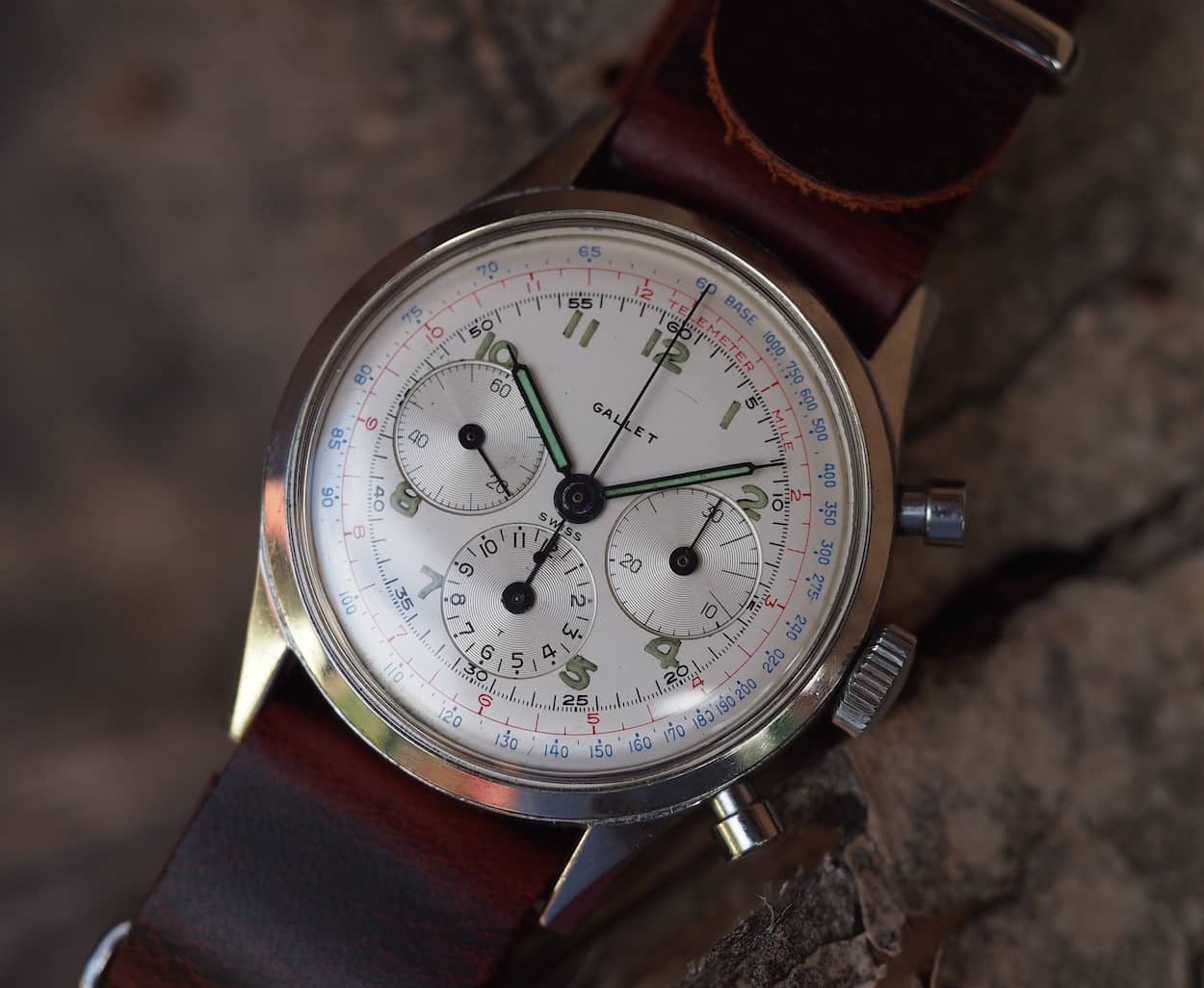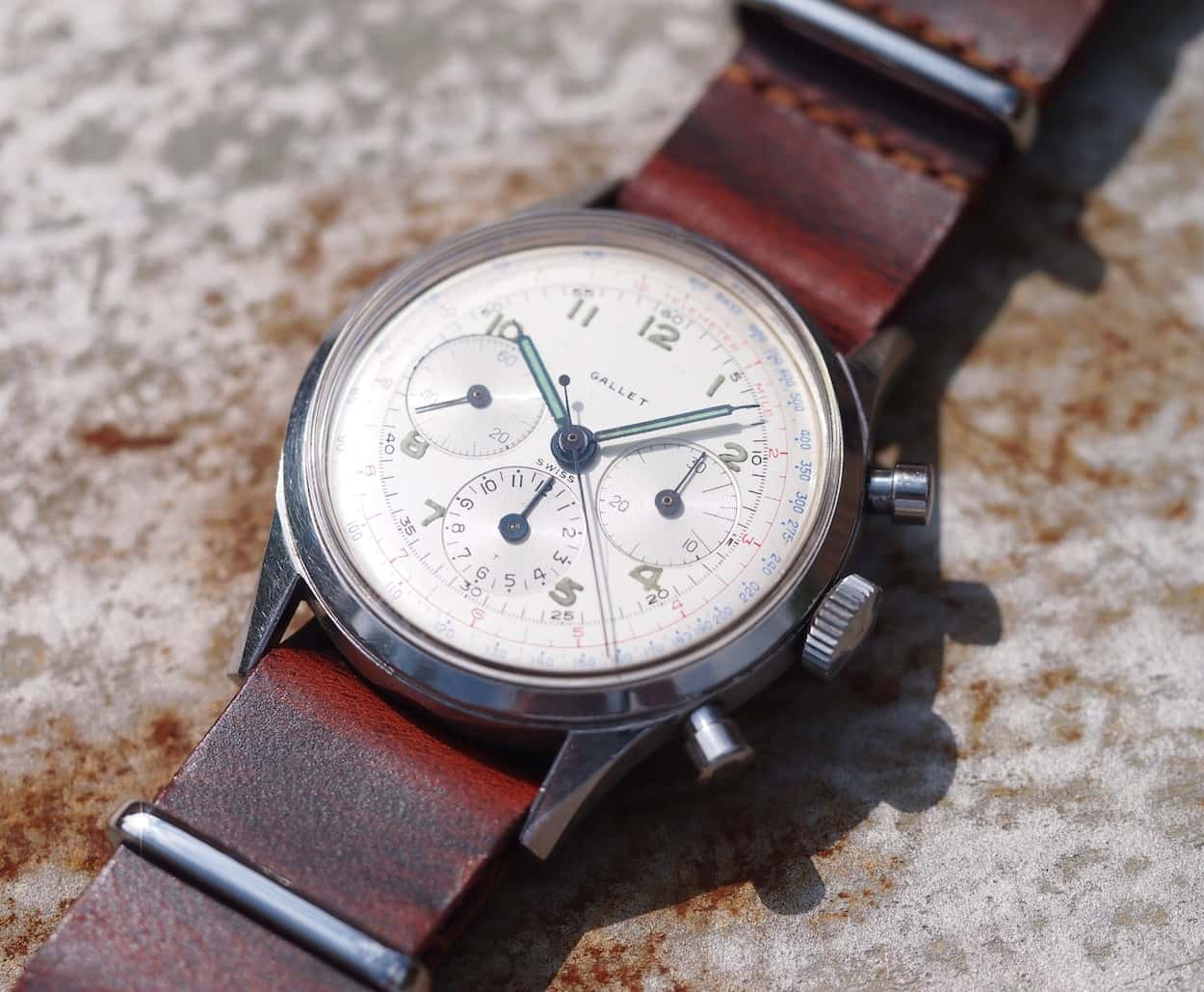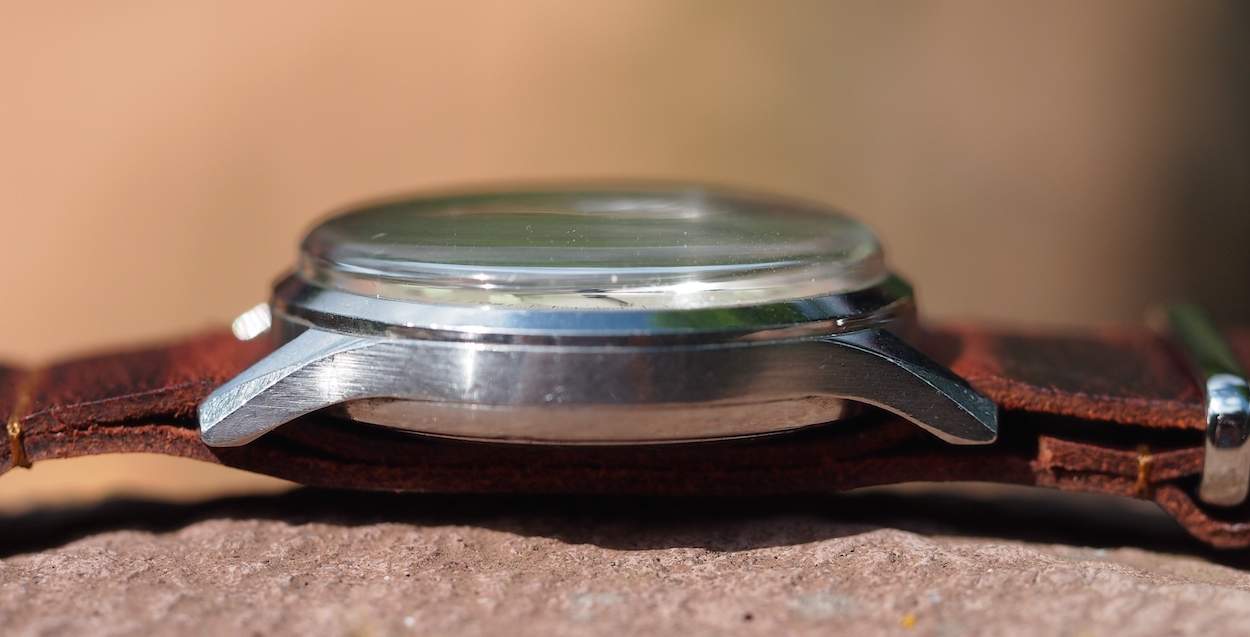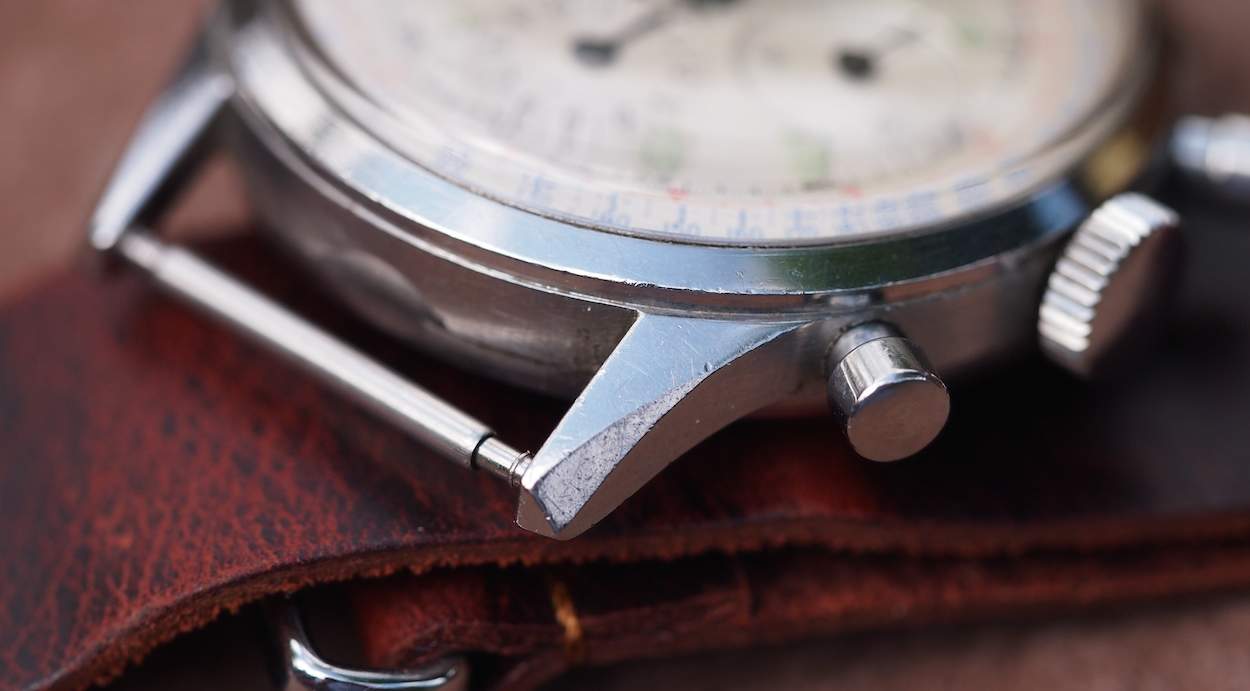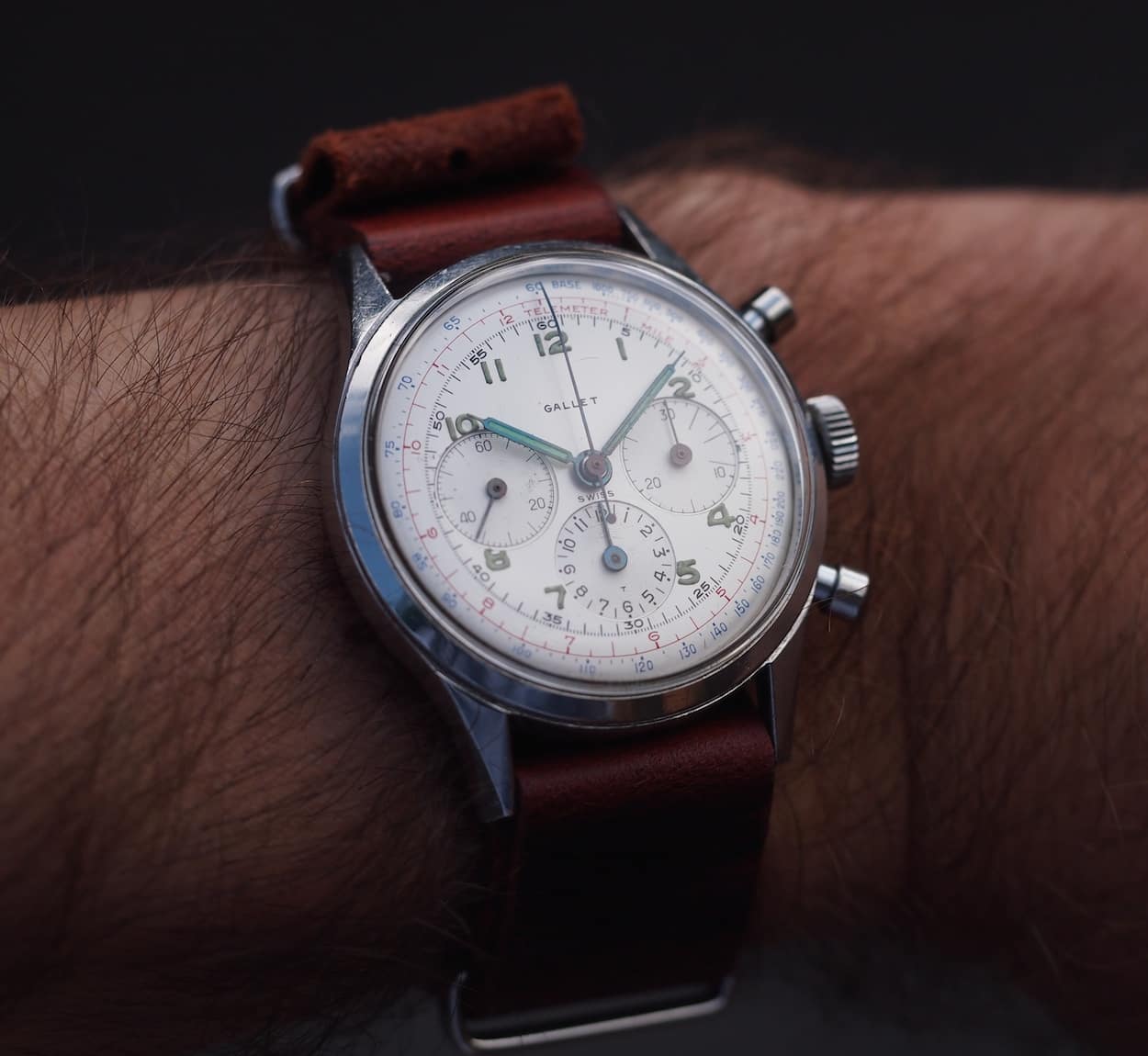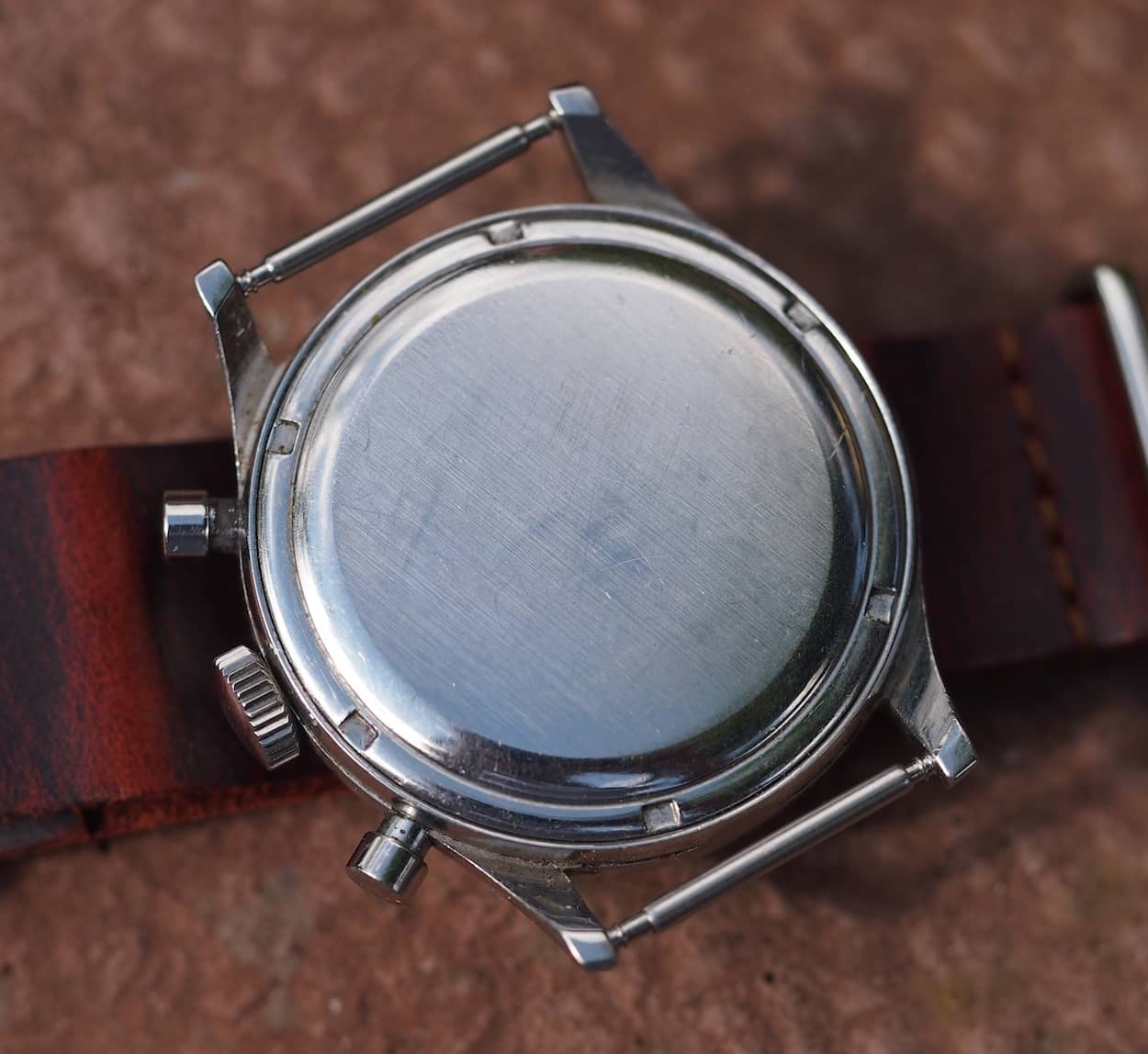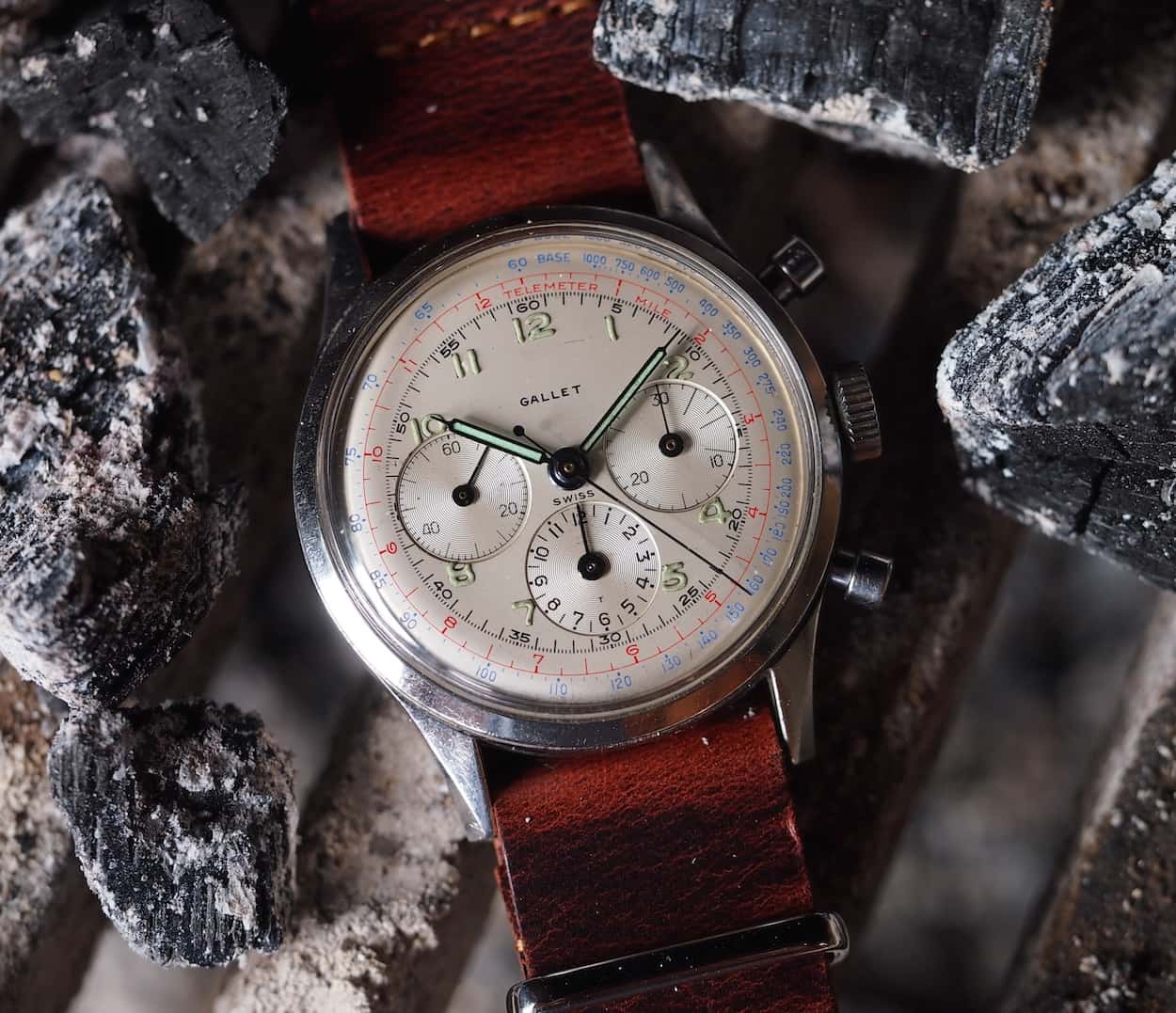#TBT Gallet Multichron 12 “EP40”
In general, when I purchase watches, I end up liking them. I don’t sell my pieces because of this, but there certainly still exists a hierarchy of pieces that I like more than others; it’s not unlike that pile of t-shirts we all own, all of which are the same size yet possess an imaginary ranking. Amongst my favorite chronographs, I count a Heuer Carrera 2447S, a Breitling 765CP “Killy”, and a ratty, overpolished “Ed White” Omega Speedmaster. Every so often, though, I add a watch that climbs to the acme of the horological summit that I’ve created and it fights hard for more than its fair share of wrist time. Recently, this occurred and I’m happy to share a little bit about this chronograph because it is a true gem that’s also actually quite affordable. This week’s #TBT takes a look at a watch that ticks all the boxes: the white Gallet Multichron 12 with an Excelsior Park 40 movement.
The Gallet Multichron ticks all the boxes
I mentioned attributes that I like to fill when looking at a vintage chronograph and while they may be different from yours, I think they’re fairly commonplace. So what do I look for? I like a chronograph with a decently sized case, preferably 36mm or above, as these tend to look a little more sporty and contemporary. I like a solid stainless case from a wear perspective and I almost always insist on a celebrated column wheel movement from a great maker. I have little against lever or cam action chronographs, but I like the mechanical intricacy of a column wheel and the thought that these were more expensive and difficult to produce. Oh, and while I occasionally fall for the simple symmetry of a 2-register timekeeper; 3-register pieces are my bread and butter because I like how these sub-timers populate the dial.
Speaking of the dial, a well thought out design is also important but the real draw for me on a chronograph, wait for it, is the view of the crown and pushers juxtaposed with the case. Scores of vintage chronographs have great cases, innards, and dial designs, but inexplicably lose their way when it comes to the controls. I enjoy the Vulcain that I reviewed tremendously and admire last week’s Yema, but these watches don’t finish the race for me when it comes to their protuberances.
Big, simple winding crowns in combination with reasonably sized (length and diameter) capped pushers (exposed posts please) show the appropriate sense of purpose for these true tool watches. Really, these pieces were intended for stopwatch use, so give the user something to use! Here, readers, the designers of the Gallet Multichron performed admirably.
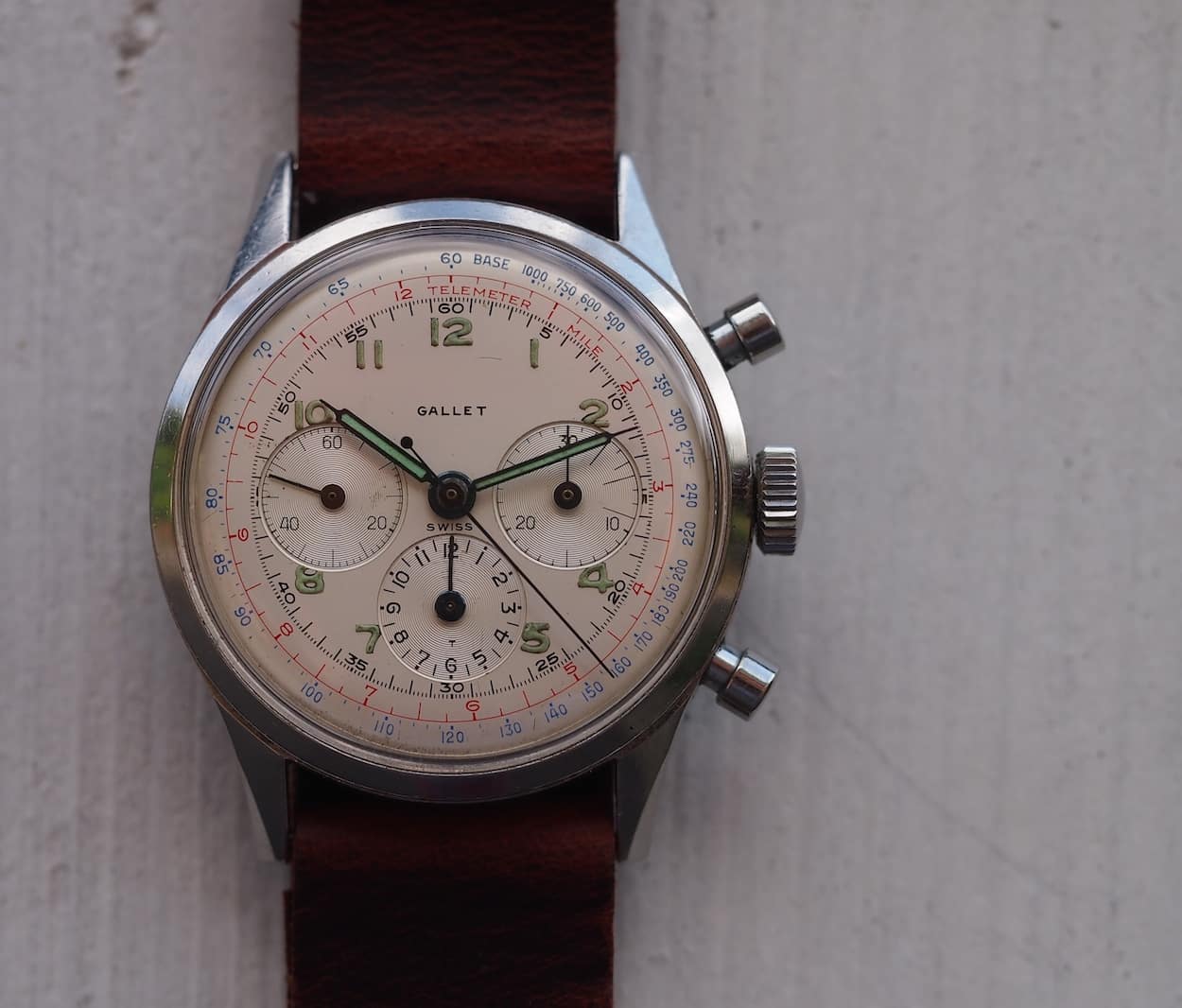
Viewed head-on, the Gallet Multichron is fantastic. Look at those perfectly sized pushers and crown!
Gallet Multichron…some perspective
The Gallet Multichron is a piece that has slowly gained momentum in the eyes of collectors. Its mainstream day in the sun, albeit the black-dialed version, occurred with its supposed relationship to the deceased World Champion and Indy 500 winner, Jim Clark. Real, hard-core, pictorial proof of the champion wearing a Gallet still eludes the watch community, but I am at least thankful that the story introduced one of “watch-dom’s” great chronograph designs to a larger group.
If one heads over to Galletworld, you can read some brief history on the Multichron along with viewing some general specifications. One thing you’ll note is that Multichron’s were made for a long time. Think of this watch as a core Gallet model not unlike Omega’s Speedmaster or Heuer’s Carrera. And while the models from those other brands changed over time, some more or less, they also often changed movement type from one generation to the next. The wild thing about the Multichron is that Gallet, during certain periods, offered it with two legendary, column wheel movements at the same time.
A new movement for me…inside the Gallet Multichron
That’s right; Gallet offered their Multichron 12 in either a black or white dial, with either the Valjoux 72 or the Excelsior Park 40 (EP40). I happen to own a Valjoux 72-powered black dial piece that I’ll review at another time, but today’s focus is on the white-dialed EP40 Gallet Multichron. As you know, I love my Valjoux 72’s, but I had not yet had the pleasure of owning a watch with a movement sounding like a stodgy, London neighborhood…until recently. Yes, before buying this piece, and while looking at other EP40-laden watches, I chatted with @watchfred and he told me, over and over I might add, that the EP40 was an absolute favorite of his due to its smoothness of operation. Could anything be as good as my cherished 72’s? Well, yes, and perhaps better…
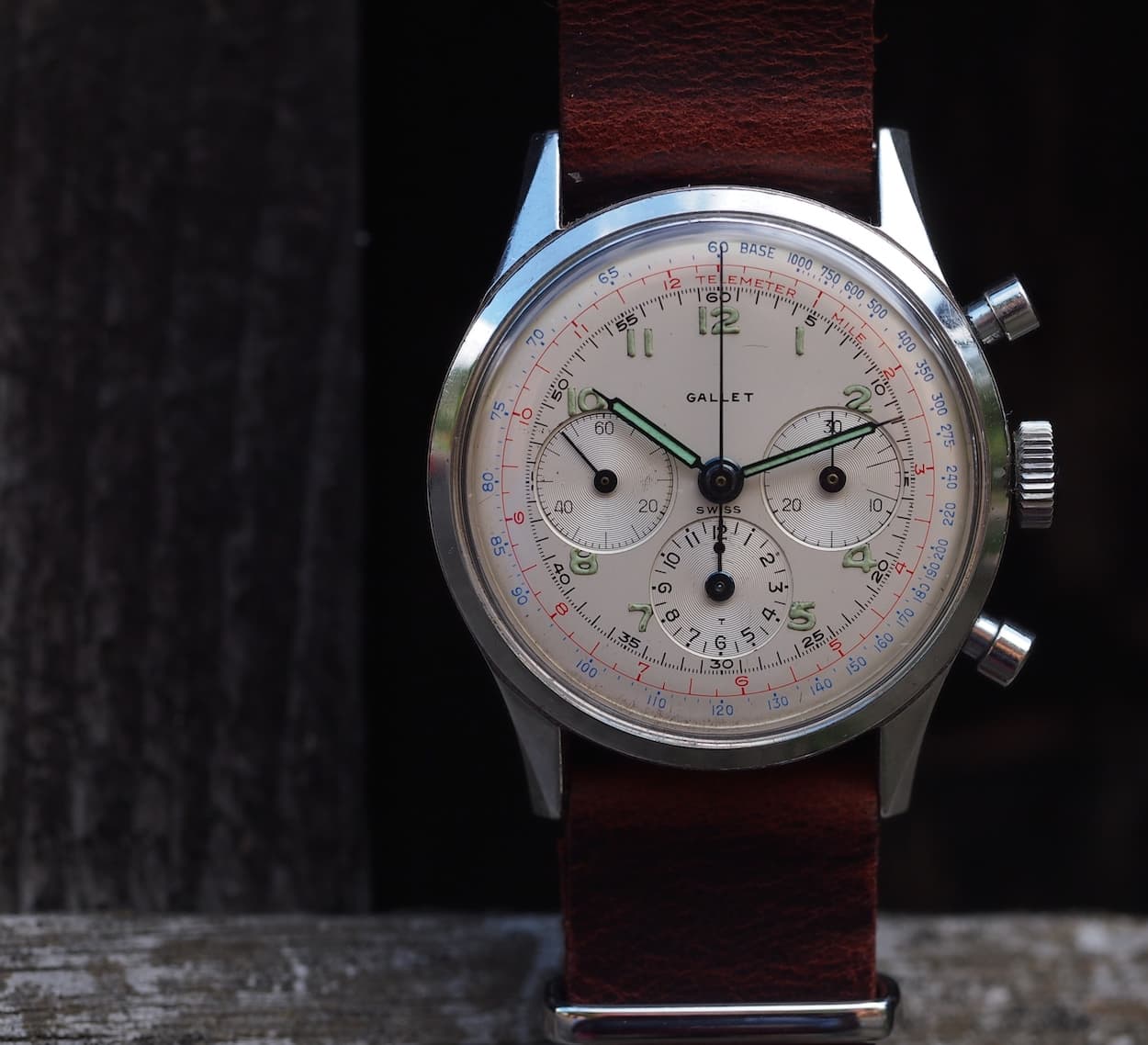
The red telemeter and blue tachymeter scales give this Gallet Multichron beautiful contrast that the black version lacks.
Details on the Gallet Multichron
The watch you see here was originally on eBay and I tracked it, but a friend, Andreas @mylocaltime, ended up buying it and taking delivery. Once all was confirmed as good and in working order, I ended up buying it from him about a week later. The Gallet Multichron arrived at my office on a Tuesday and I remember opening it up and thinking, wow! I was initially taken by the great colors on the dial such as the blue tachymeter and red telemeter scale.
The thick, domed crystal and beefy case also add some serious heft to the watch as well, but then my eyes fell on the controls and it was pure adulation. I think, of all chronographs I own, this piece contains the most perfectly balanced crown and set of pushers as far as size, placement and their fit relative to the size of the case.
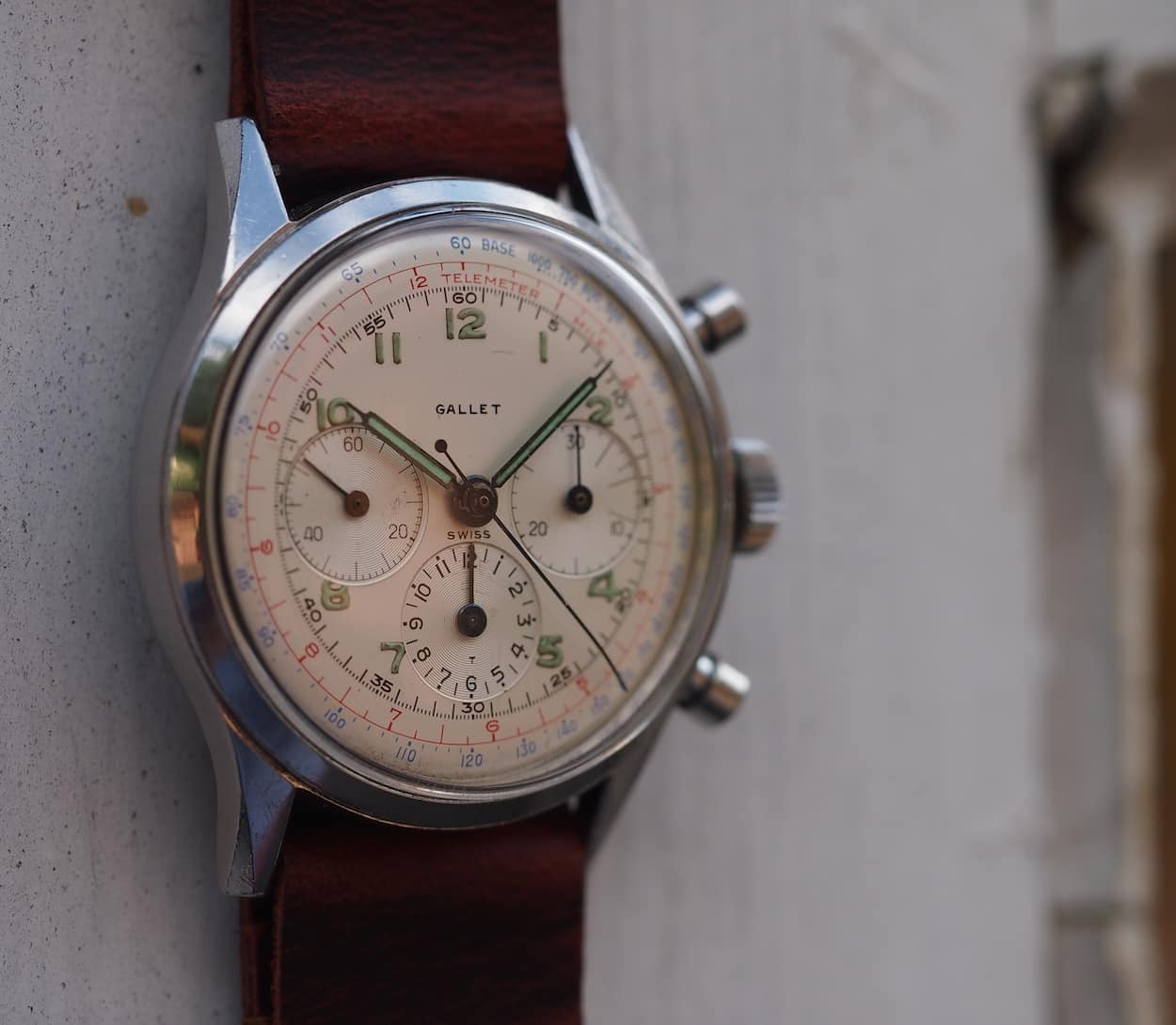
Not a lot of extraneous information exists on the Gallet Multichron dial…just scales and more scales
Next, it was time to wind the Gallet Multichron and try out the hyped EP40. Winding the watch is fantastic with little spring back through the crown. The 17-jewel movement lopes along at 18,000 bph, but does not come across as extremely loud. Activation of the top pusher starts the chronograph ever so smoothly and another push brings it to halt. Next, the bottom pusher is depressed and the central hand literally glides back to 12:00. It’s fantastic and so buttery smooth that I cannot recommend an EP40 enough. I own at least one of every other major column wheel movement from the 1960’s except for a Movado M95 and I have to say that the EP40 is the most “supple”.
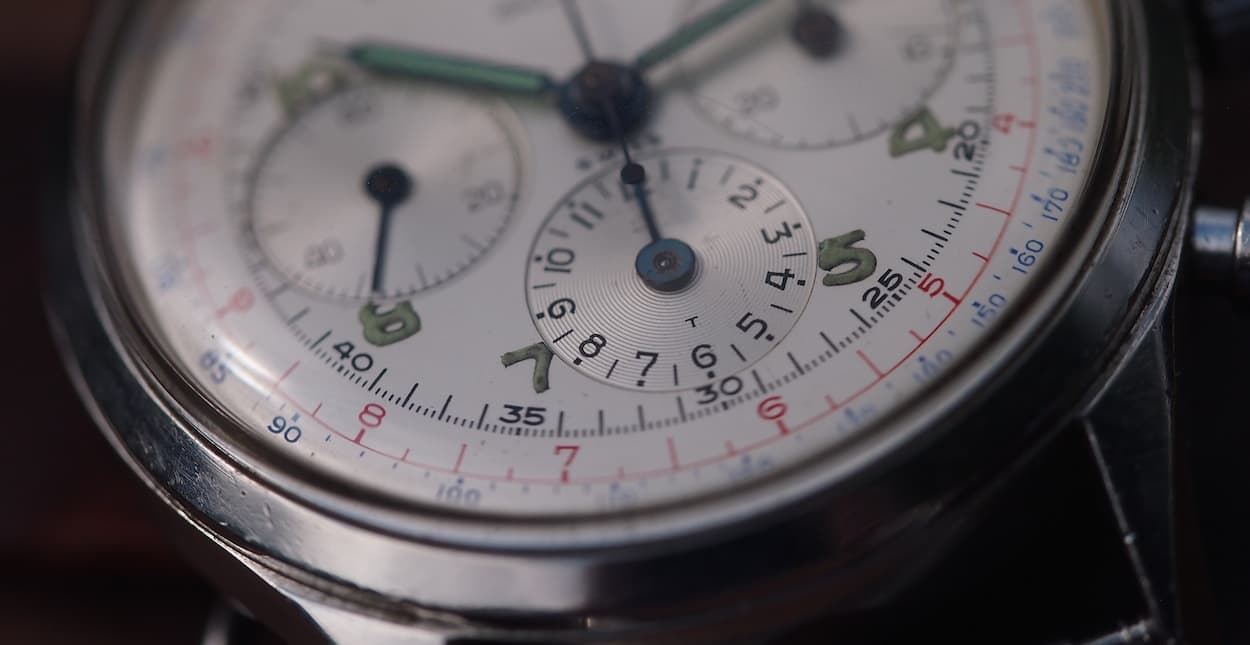
Funky lume, great font, and ridged sub registers are all part of the package on the Gallet Multichron
Drooling subsided, let’s take a brief look at the appearance of the Gallet Multichron because a movement alone does not a watch make. This piece has what I would call a rather old-fashioned dial. In fact, I consider the Multichron in either dial color to look very “old-timey” and while early models are gilt, all retain a vintage, printed look. There’s nothing applied on this version of the Multichron except for lume and paint. This fact makes Multichrons, especially those in white, especially susceptible to redials because any damage is easily seen. The design, though, is very attractive and highly legible. As mentioned, there’s fantastic contrast between the black printing found within the radial sub registers and the red and blue scales.
The other color found on the dial is a curious green that makes up the lume hour markers and highlights the hour and minute hands. The hour markers are pillowy and perhaps the one weak spot on the dial. Time probably hasn’t been kind to them. Moving onto the syringe hands, we see an almost fluorescent green used as filler. The two clearly don’t match very well, but in talking to Fred again, Gallet clearly used some “funky lume” and everything appears to be original on this piece. To be honest, though, it all somehow works.
The case size of the Gallet Multichron, which I have not measured, clocks in somewhere between 37 and 38mm, which makes it very comfortable and modern enough. Gallet, thankfully, used a 20mm lug width and this makes fitting straps very easy. Speaking of those lugs, check out the hallmark Gallet triangular chamfering that really adds to the character of this watch! You can see the same thing on the Gallet Mutlichron Aviator that we reviewed earlier this year.
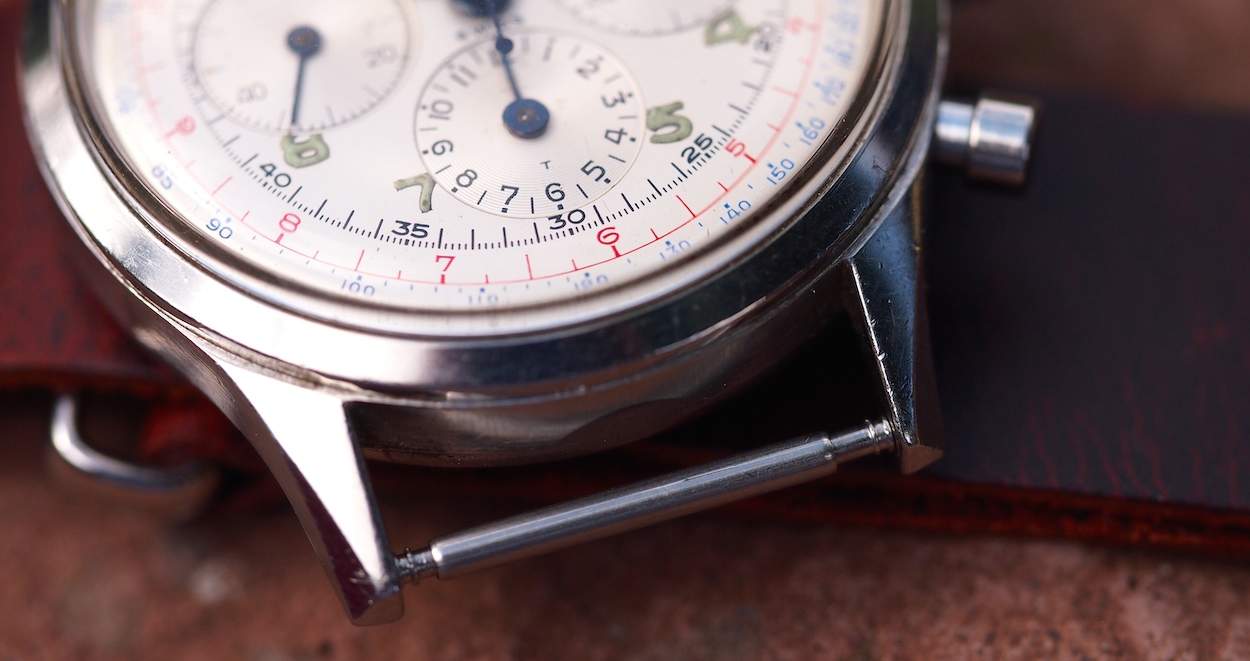
See the thoughtful cutouts in the case to allow for strap clearance…nice touch on the Gallet Multichron
Also, note the case indentations between the lugs to help make room for a strap: thoughtful details indeed!
The Gallet Multichron is a lovely wear
On the wrist, the Gallet Multichron is incredibly comfortable and well balanced. As I mentioned, it’s a perfect size that doesn’t look too dated or out of place.
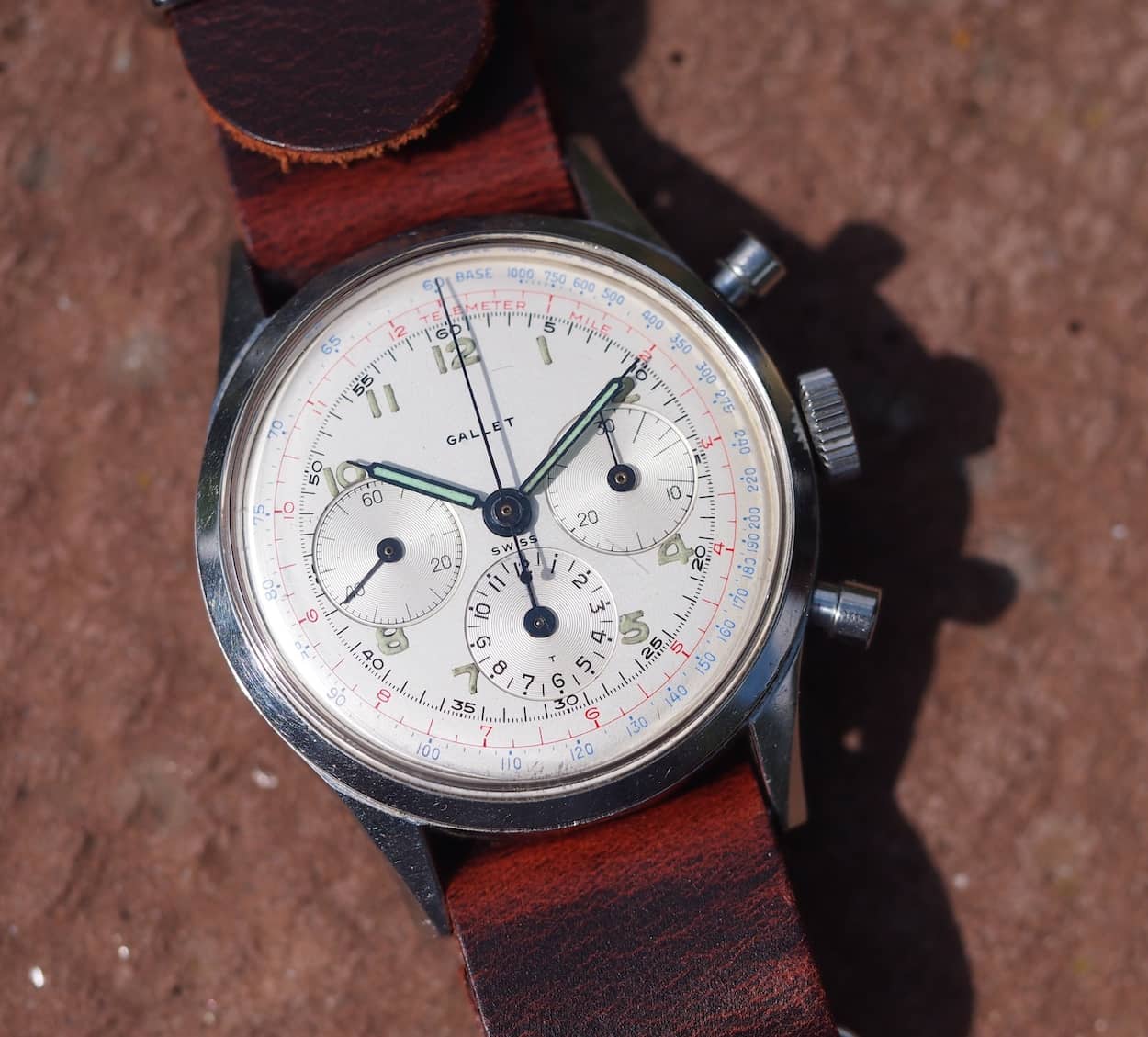
This oxblood leather NATO fits the Gallet Multichron quite well…adding to the “rough and tumble” look
Since I’ve owned it, I’ve paired it with an oxblood leather NATO from Andreas that really looks great. I’ll probably continue to play around with other colors because, after all, a 20mm lug width makes life easy when it comes to finding more strap options.
Tracking down a Gallet Multichron
eBay tends to be a good place to find a Gallet Multichron. You see them priced all over the map, but my advice is to hold out for a good one that contains all of its parts. While things like crowns really don’t matter on a Gallet, they’re unsigned, you don’t want to find yourself hunting things like hands and dials. Oh, and the best part about a Multichron, especially the white dials, is the price.
Whereas black dial pieces can range from $2,000 – 3,000, this piece recently sold for $1,100 on eBay! No matter how you cut it, that’s a steal for a watch with this much content. So, yes, the white dials tend to sell for less than the black dial pieces, but keep a watchful eye as the word is out on Gallet. Regarding choice of movement, I’ve not seen a real difference in pricing on the EP40’s versus the Valjoux 72, but I’d recommend going for an EP40.
It’s an opportunity to add a movement that is likely different from the other watches in your collection. Plus I find that the sub registers on an EP40-powered piece exhibit better spacing on the dial; the Valjoux 72 sub registers actually overrun the outer scale.
I wasn’t sure what to expect when I received this white dialed Gallet Multichron, but I was highly pleased upon opening the package. This watch has become a “go to” piece for me and I really struggle to find fault with it. I hope you enjoyed taking a look at this watch and perhaps we’ll hear from at least one of you who picks one up and enjoys it as much as I do. Thanks for reading this week’s #TBT and as always, until next week…
The photos in this article were taken in the small village of Hodrusa Hamre, Slovakia.

